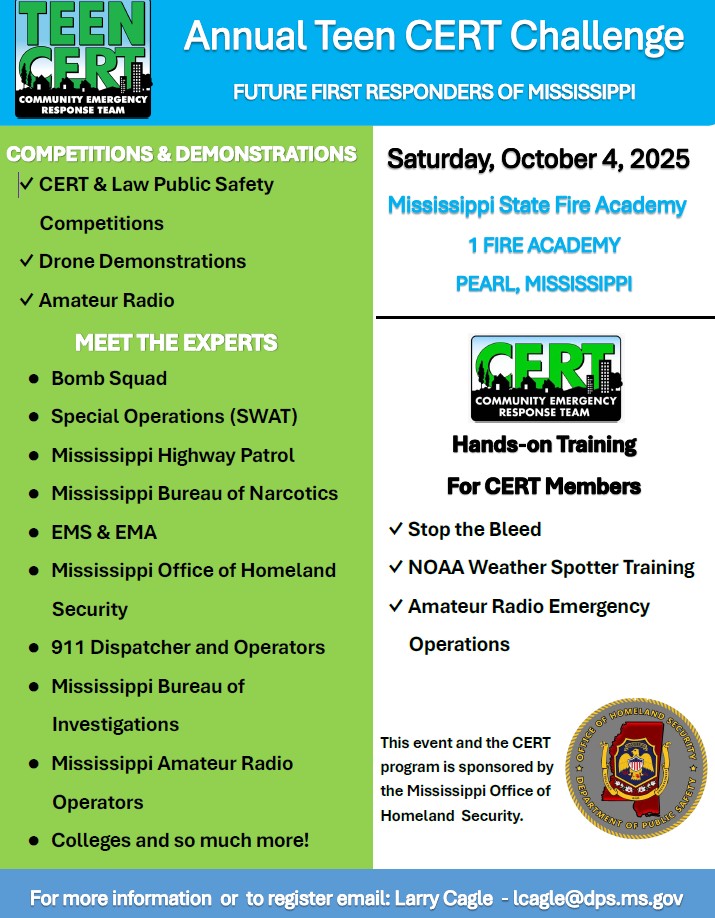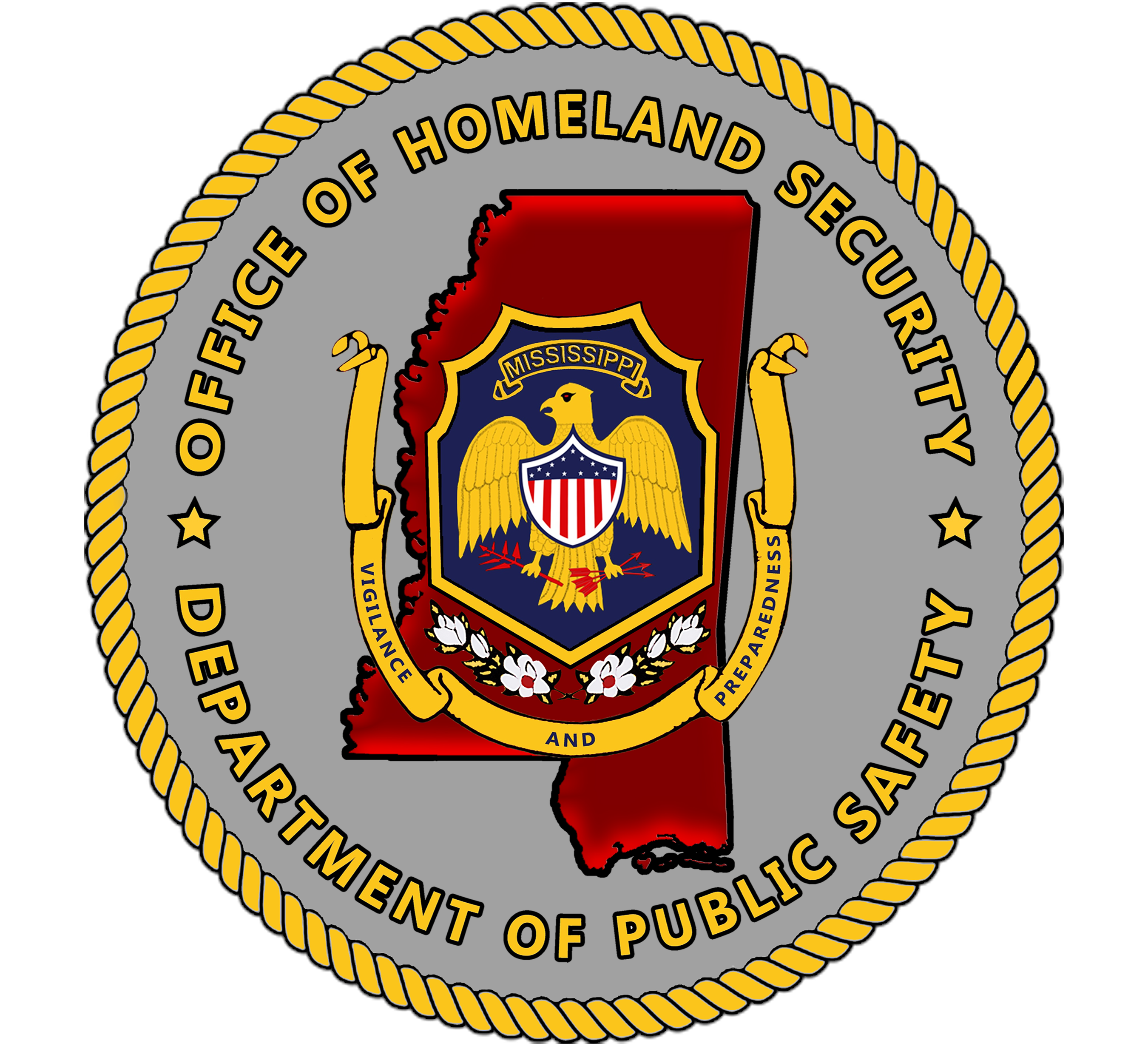TEEN CERT ANNOUNCEMENTS:
- The 2026 Teen CERT Challenge is scheduled for Friday, April 10, 2026.
- Location: Mississippi State Fire Academy
- Scheduled Events:
- Teen Challenge Events:
- Traffic Stops
- Crime Scene Investigation
- Dispatch
- Scene Stabilization
- Suspect Apprehension
- Search and Rescue
- Fire Extinguisher and Utility Control
- Teen Challenge Events:
- Event is free for participating Mississippi Schools.
- Lunch is provided for registrants
- T-Shirts are provided for registrants
- Registration Opens: January 7, 2026.
- Registration Closes: March 6, 2026.

WHAT IS TEEN CERT?
TEEN CERT is a national Homeland Security Initiative directed at making our schools and communities safer by having educated / trained youth capable of preparing for and responding to disasters and emergencies. TEEN CERT is an integral part of the Citizen Corps movement. TEEN CERT is a training program that prepares you to help yourself, your family and your school in the event of a disaster. As a member of TEEN CERT, you can respond to disasters, participate in drills and exercises, and take additional training.
The purpose of the TEEN CERT program is to train students in emergency preparedness and response to ensure students have the skills needed to protect themselves, and assist others, in the event of an emergency. In addition, students are likely to bring lessons learned in the classroom home, thereby spreading the preparedness message to the entire family.
TEEN CERT Challenge-October 4, 2025:
The MOHS held the 1st Teen CERT Challenge on October 4, 2025. There were 12 participating schools, with over 200 student participants that in six (6) events. Students were challenged events such as: First Aid; Disaster Operations; Traffic Stops; Fire Fighter Agility; Utility Control and Scene Stabilization.

Photo's from 2025 TEEN CERT Challenge:
TEEN CERT Forms:
Training Opportunities:
Training Opportunities are available. Please contact the CERT Statewide Coordinator, Larry Cagle @ 601-987-1278 or lcagle@dps.ms.gov
